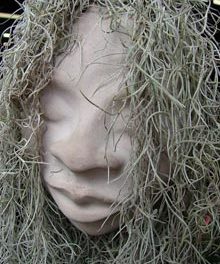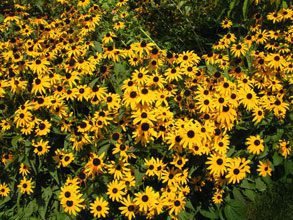 They are everywhere right now. Amaryllis, Christmas Cactus, the ubiquitous Poinsettia, cyclamens, even tiny evergreens. They started bombarding our senses shortly after Halloween and well before Thanksgiving. You still have a grand selection and they seem to be available wherever you shop. Nurseries, garden centers, grocery stores, convenience stores, even the pharmacies are awash in them.
They are everywhere right now. Amaryllis, Christmas Cactus, the ubiquitous Poinsettia, cyclamens, even tiny evergreens. They started bombarding our senses shortly after Halloween and well before Thanksgiving. You still have a grand selection and they seem to be available wherever you shop. Nurseries, garden centers, grocery stores, convenience stores, even the pharmacies are awash in them.
Living things add a unique dimension to holiday decorations. While the flowering plants are brightly colored, some might say garish even, they still seem to ground the rest of the glitter this time of year. The trick is keeping these brilliant beauties alive and healthy throughout the holiday season and for seasons to come.
Amaryllis grow from very large bulbs. You usually see them in a box with a plastic pot and potting medium although your better nurseries often carry individual bulbs. The directions that come with the bare bulbs often indicate that they will bloom in a few weeks. I’ve never been lucky enough to have that happen myself. Perhaps I did not offer the right conditions but it usually took a minimum of 12 weeks for one of mine to flower. Fortunately they are often sold in full bloom. They prefer rather small containers, being happiest when root bound. After planting the bulbs with the top third of the bulb above the soil level, water well and do not water again until you see the flower bud and/or leaves growing. Allow soil to dry out between watering. Once your Amaryllis has bloomed and the flowers begin to fade, cut off the bloom stalk and lightly feed and water. The leaves will continue to grow. As the weather moderates in the spring the bulb can be planted outdoors. Yes, for the newcomers to Beaufort County, Amaryllis are carefree and truly hardy perennial bulbs here. They will gather strength the first year then multiply and bloom, usually in May & June, for many years to come. Hint – after the holidays you can often find them at greatly reduced prices.
As a child I watched and admired my grandmother’s Christmas Cactus. I was told it was at least 50 years old. I suspect the plant I knew was probably a cutting or descendant of the original plant. All living things have life spans but you can keep a line going for well beyond 50 years by propagating the original. I even had a piece of the plant myself until a few years ago when it did not survive a long distance move to a new home. I keep my cactus outdoors most of the year. It sits under a shrub where it gets bright but indirect light. These cacti are tropical rather than desert cacti so they do need water and food during their growing period of spring and summer. As the days shorten in the fall you can slow up on the water and food, they need cool dry and preferably dark conditions then to set buds. The botanical genus is Schlumbergera. In our climate we can leave our Christmas cacti outdoors until there is a threat of frost or early December, whichever comes first, then bring it inside and set it in a bright location. While it is in the house I only water when the soil is dry and as soon as the weather moderates it goes outside under that shrub again. Clemson has a good factsheet on these plants. http://www.clemson.edu/extension/hgic/plants/indoor/flowering/hgic1554.htmlhttp://www.clemson.edu/extension/hgic/plants/indoor/flowering/hgic1554.htmlv
Poinsettias seem to be the most difficult to keep healthy but they don’t have to be. If you never fertilize them while they are in bloom and don’t overwater you can keep them flowering for months. If the pot has one of those foil covers on it get it off so the water can drain freely and only water when the soil is dry. Master Gardener Pat deSatnick has several poinsettias that have been growing in her garden for several years, completely unprotected during cold weather, and they are blooming beautifully right now. These were gift plants that she planted outdoors after the holidays.
Traditionally poinsettias require a set number of hours of complete darkness to set buds and growers go to great lengths to achieve this. Pat’s plants however seem to have adapted to her outdoor lights and they generally hold their flowers until early summer. Not everyone has Pat’s extraordinary green thumb but if you would like to try this yourself, she has them in a spot where they get late afternoon sun; try and replicate that location.
The cyclamen and the tiny evergreen trees should probably be treated as annuals. Enjoy them while they are in good health then compost them. It is possible to keep them growing here but as soon as it gets hot they get stressed. The cyclamens will go dormant and may or may not come back and the evergreens will get spider mites, it is almost guaranteed.
The Christmas Classic plants blend well with native greenery for your holiday decorations. So if one or two happen to jump into your hands while you are out and about shopping in Beaufort, it is understandable. It wouldn’t be December if we didn’t have some of these beauties on hand to remind us of our garden blessings.








